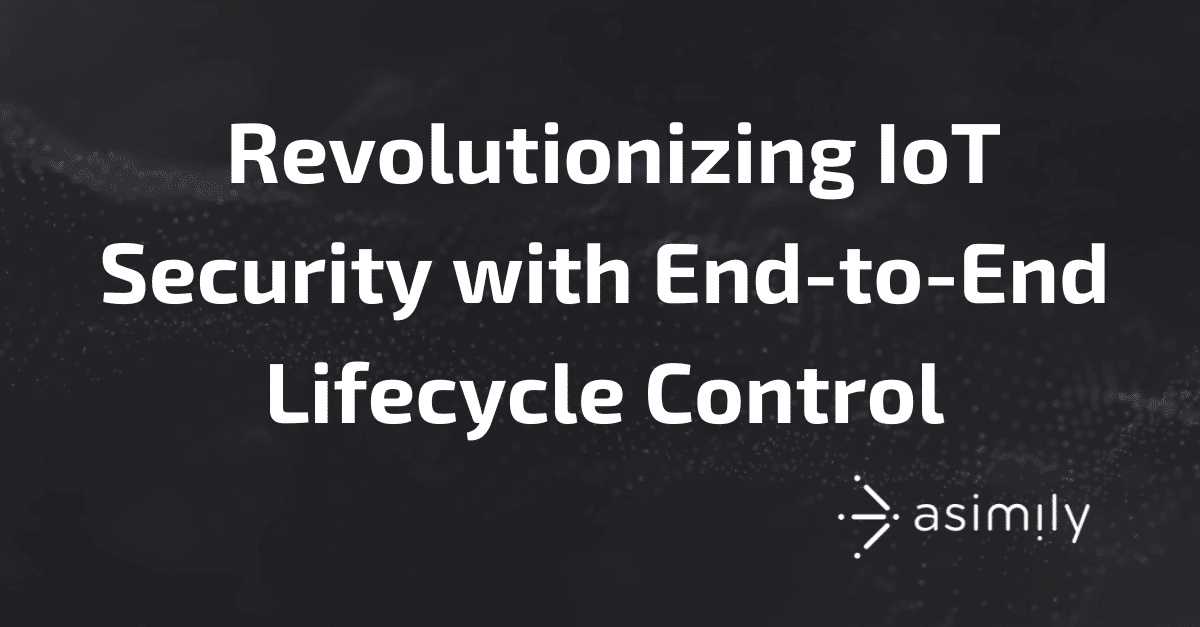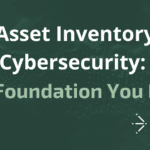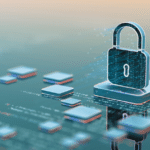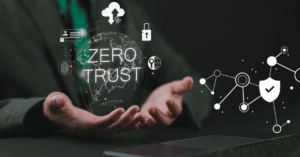Revolutionizing IoT Security with End-to-End Lifecycle Control

An organization’s responsibility for managing a technology investment begins during the procurement phase. Organizations rely on Internet of Things (IoT) devices to improve daily operations and meet revenue targets. Simultaneously, they need to integrate these technologies into their larger enterprise IT management practices. IoT device lifecycle management is more than an operational concern. Without knowing all the devices connected to the organization’s networks, organizations face security risks, compliance violations, downtime, and inefficient resource utilization issues.
Problematically, IoT devices are notoriously difficult to manage. IoT devices are diverse, including everything from security cameras to sensors that monitor manufacturing floors. Additionally, an organization may have thousands of IoT devices that make manual lifecycle management time-consuming and error-prone.
With an all-in-one IoT device lifecycle management solution, organizations can create robust processes for handling their device deployments, security, and documentation proving governance over them.
What is IoT Device Lifecycle Management?
IoT Device Lifecycle Management refers to the end-to-end process of managing an Internet of Things (IoT) device from its initial deployment to its eventual retirement. This includes:
- Purchasing: Assessing third-party risk during procurement
- Provisioning: Setting up and securely connecting the device to a network
- Hardening: Implementing secure configurations to mitigate security risk
- Monitoring & Maintenance: Continuously tracking performance, scanning for vulnerabilities, and identifying anomalous behavior
- Firmware & Security Updates: Applying security patches to operating systems, software, and firmware to mitigate security risks
- Decommissioning & Disposal: Securely retiring the device when it reaches the end of its useful life
Why Do Organizations Struggle with Managing the IoT Device Lifecycle?
As organizations deploy more IoT devices, their IT management strategies must evolve to handle the security, compliance, and operational issues that arise from these technologies. Managing IoT devices from procurement through decommissioning creates various challenges arising from:
- Diversity: different hardware, firmware, and software across various device types, including printers, smart TVs, security cameras, medical devices, and sensors for machinery
- Scale: deployments include hundreds or thousands of devices
- Security: limited computing resources which make implementing strong security measures difficult
- Connectivity: active scanning solutions taking devices offline
- Compliance: documenting all devices and activities related to securing and monitoring them overwhelming IT and security teams
- End-of-life management: high replacement costs for devices embedded in systems or inability to securely decommission devices
IoT Lifecycle Management Best Practices & How Asimily Helps Achieve Them
As IoT devices become more important to operations and objectives, organizations should find solutions to help them with end-to-end lifecycle management.
Analyze Risk During Procurement
With no formalized security standard, IoT devices are inherently risky technologies. Aside from the lack of standards for securing them by design and default, they also have limited computing power which limits your ability to implement traditional protections, like installing anti-virus.
With Asimily’s platform, you can gain insight into how an IoT device will impact your organization’s security posture with:
- Easy-to-understand organization risk score that summarizes overall device risk level
- Device risk simulations that use theoretical and actionable recommendations for reducing risk
- Visibility into how specific changes can immediately reduce risk for insight into potential deployment options
Identify and Harden Devices
IoT devices are part of the larger IT environment, meaning that you should incorporate them into your overarching asset inventory and configuration management practices. Many organizations find this challenging because the technologies that work for enterprise IT devices can disrupt IoT services. Further, as more user-owned IoT devices, like smartwatches, connect to corporate networks, IT and security teams struggle to identify all of them. Shadow IT, technologies that your IT and security team does not manage, creates security risks, especially when you have no insight into their existence.
Asimily’s agentless solution improves security and provides visibility into your organization’s IoT device deployments by:
- Using passive scanning technology so that the artificial intelligence (AI) and machine learning (ML) models can analyze network traffic patterns and engage in deep pack inspection to create and maintain an asset inventory without disrupting service
- Integrating with your other asset inventory technologies for a comprehensive list of all assets and context into the environment
- Parsing new device communication protocols so you can easily add future manufacturers or devices to the asset management system
- Immediately exposing newly detected devices to mitigate shadow IT risks
- Discovering and monitoring operating systems, applications, firmware versions, and patch levels present across the deployment
- Discovering and inventorying serial-attached devices to understand parent-child relationships
- Setting automated rules and parameters for creating both bulk and automatic configuration snapshots of large numbers of devices
- Capturing a snapshot of a device’s ‘known good configuration’ for faster incident recover
- Creating access control lists (ACLs) to aid in zero-trust architecture initiatives while making networks more secure
Continuously Monitor for Vulnerabilities, Maintenance, and Security
With the size and diversity of IoT deployments, monitoring to identify security vulnerabilities becomes overwhelming, especially when traditional active scanners can disrupt service. Beyond the sheer volume of devices, organizations need to manage the breadth of manufacturers, each of which may have a different approach to sending vulnerability notifications or providing security updates. Finally, many organizations struggle to keep track of their IoT devices’ physical locations and actual usage.
Vulnerability and Patch Management
When you incorporate Asimily’s IoT monitoring platform into your IT and security monitoring practices, you can better manage device vulnerability detection, patch management, and ongoing maintenance by:
- Detecting vulnerabilities while incorporating the National Vulnerability Database (NVD) and manufacturer information to respond faster
- Prioritizing vulnerabilities by using the MITRE ATT&CK framework combined with context about the network and configurations for each device
- Analyzing Software Bill of Materials (SBOM) data
- Reducing or eliminating false positives for a source of IoT vulnerability mitigation truth
- Providing targeted remediation guidance beyond segmentation and patching with the simplest action that will reduce the most risk
- Offering an actionable list of next steps ranked by risk, using Potential Impact and Likelihood of exploitation
- Checking regularly for configuration drift
- Providing a configuration comparison view to understand changes and a timeline to assist investigations into configuration drift
Maintenance and Usage
While vulnerability and patch management are part of maintenance, you need insights into how your organization uses the IoT fleet, especially when trying to make decisions about future investments. Asimily’s platform provides insight to inform routine maintenance and device usage by:
- Assisting with real-time asset location by providing access to device location or integrating with a location solution
- Acting as a central management for multi-location or multi-region deployments through region tagging
- Providing accurate device utilization metrics based on a custom expected usage window, like only during business hours or continuous 24/7
Threat Detection and Incident Response
As part of your continuous security monitoring program, you should incorporate IoT devices, especially as attackers increasingly target them. Asimily enables holistic and comprehensive monitoring by providing threat detection and incident response capabilities, including:
- Analyzing devices’ network traffic to detect anomalies that may indicate a potential security incident
- New rules for responding to new threats, like zero-day attacks
- Triggering response actions, like quarantining or alerts for efficient response and recovery
- Building anomaly detection rules in various ways and across various experience levels
- Capturing forensic evidence with packet-level traffic
- Retaining packet-level traffic capture data in the preferred repository
- Detecting unauthorized traffic between IT and IoT as well as external communication to protected areas
Support for End-of-LIfe Devices
Many organizations need to retain devices that their manufacturers no longer support. For example, in the healthcare context, an MRI machine may run on a version of Windows that Microsoft no longer updates. However, the machine and the connected devices were a large capital investment, and the organization may not be able to invest in a new machine. When trying to maintain these technologies, organizations need solutions that can help manage their security.
Asimily is purpose-built to manage IoT devices so that organizations have visibility into and control over their fleets. Our platform provides context, taking into account vulnerabilities and the IT environment, so organizations can mitigate risk more effectively.
Asimily’s platform enables you to manage these devices by:
- Detecting legacy operating systems that the manufacturer no longer supports
- Providing suggestions about practical remediation steps that can mitigate risk
Asimily: End-to-End IoT Lifecycle Management
Organizations efficiently identify high-risk vulnerabilities with our proprietary, patented algorithm that cross-references vast amounts of data from resources like EPSS (Exploit Prediction Scoring System), Software Bills of Material (SBOMs), Common Vulnerability and Exposure (CVE) lists, the MITRE ATT&CK Framework, and NIST Guidelines. It understands your unique environment, so our deep contextual recommendation engine can provide real-time, actionable remediation steps to reduce risk and save time.
To learn more about Asimily, download our IoT Device Security in 2024: The High Cost of Doing Nothing whitepaper or contact us today.
Secure Every IoT Device.
Automatically.
Cyber threats move fast — so should you. Asimily gives instant inventory and smart, prioritized risk mitigation insights for every IoT, OT, and IoMT device — so you can take action before threats strike.




